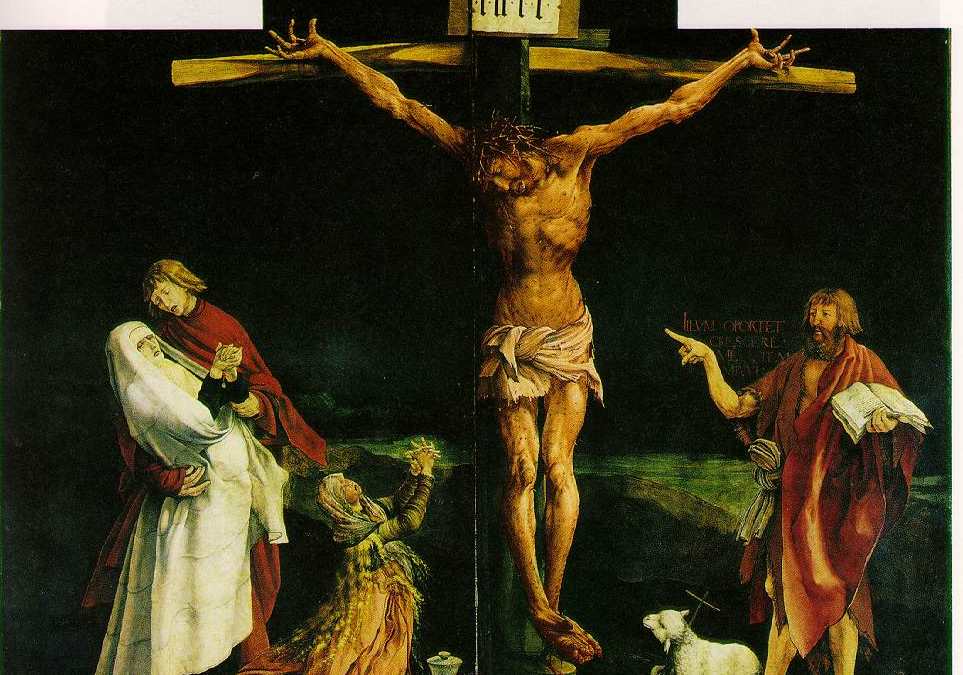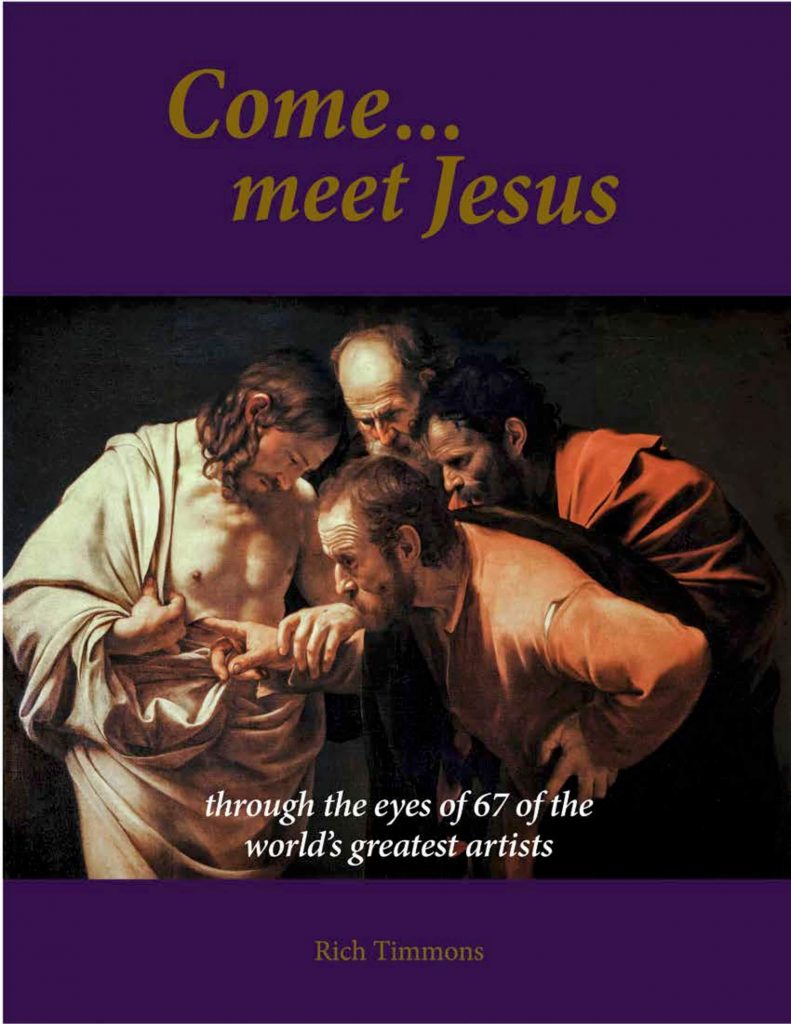It was the third hour* when they crucified him. The superscription of his accusation was written over him: “THE KING OF THE JEWS.” When the sixth hour had come, there was darkness over the whole land until the ninth hour. At the ninth hour, Jesus cried with a loud voice, saying, “Eloi, Eloi, lama sabachthani?” which is, being interpreted, “My God, my God, why have you forsaken me?” Mark 15:25-26, 33-34
The crucifixion scene of the Isenheim altarpiece might be the eeriest representation of the crucifixion in Western art. Every shape, from Christ’s twisted fingers to Mary’s flowing robe, feels contorted with agony. The space is dark and mysterious. The colors of the figures are creepily phosphorescent. Of all paintings, this surely captures the horror and suffering of Christ.
Grunewald painted this altarpiece for the chapel of the Isenheim hospital run by the Brothers of St. Anthony. This hospital was known particularly for caring for peasants afflicted with “St. Anthony’s fire” (ergotism), a disease from eating fungus-ridden grain that causes skin infection and hallucination. This painting alludes to both of those. Christ’s body is covered in ugly sores, similar to those of the afflicted who would see this, and his flesh is rendered in the yellowy-grays of disease and death. The strange colors, sharp contrast, and exaggerated tortured figures do feel a bit hallucinatory but that may just be Grunewald’s particular style. German Renaissance artists tend to favor the dark and grotesque, as opposed to their Italian or even Dutch counterparts, and Grunewald was more interested in the symbolism of the Medieval period than the classicism of the Renaissance. A few of those symbols here include the lamb, referencing Christ as the Lamb of God, and the cup from the last supper. John the Baptist, who was beheaded before the crucifixion and therefore not present, stands psychologically outside the scene although he is right next to it, and points at Jesus with text that reads “He must increase and I must decrease.” Christ, the suffering, disturbing image of a dying man. The pain represented here was meant to give the original viewers hope that Christ can relate to them in their suffering. He was no stranger to pain and death and sorrow. He understands and He, in fact, suffered far worse.
But Grunewald’s message does not end there. When the altarpiece is opened up, there is a scene of the resurrection. The contrast Grunewald painted between Christ’s gaunt, disturbing body on the cross and His whole, clean, resurrected body is moving and no doubt gave hope to the sick who saw it that one day their bodies too would be clean and whole.


